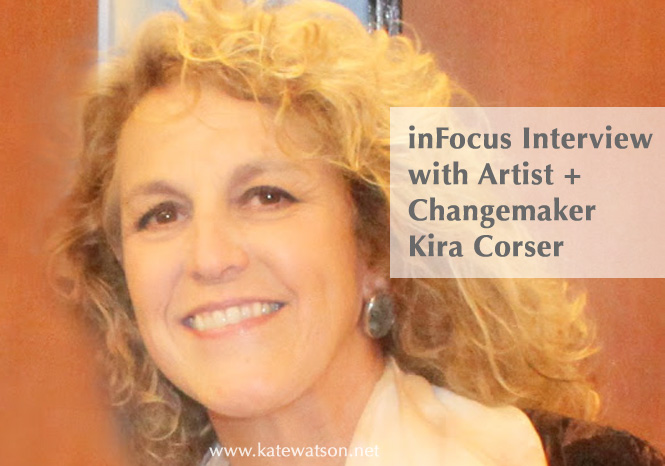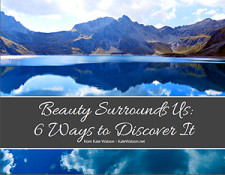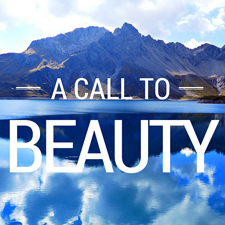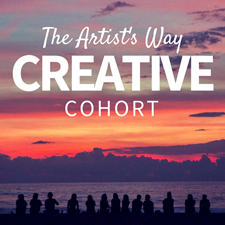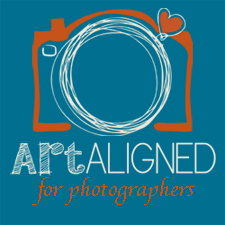This month’s inFocus interview is with artist and changemaker Kira Corser. Kira is an award-winning photographic artist, writer, and video-producer with over 26 years’ experience, including 8 years teaching at California State University Monterey Bay, specializing in Service Learning courses and community arts.
She has a Master of Fine Arts Degree and a BS in Journalism. Her nationally traveled collaborative exhibitions, along with 3 books and 9 videos, have been supported in part by many foundations and awards. Her photography has shown in major museums, including the Smithsonian and the Museum of Photographic Art, as well as in many state capitals and the U.S. Senate and Congress Buildings.
Kira, tell me a little bit about yourself and your work.
I am an artist who believes that art is a voice for social justice, for building community strength, for healing and education.
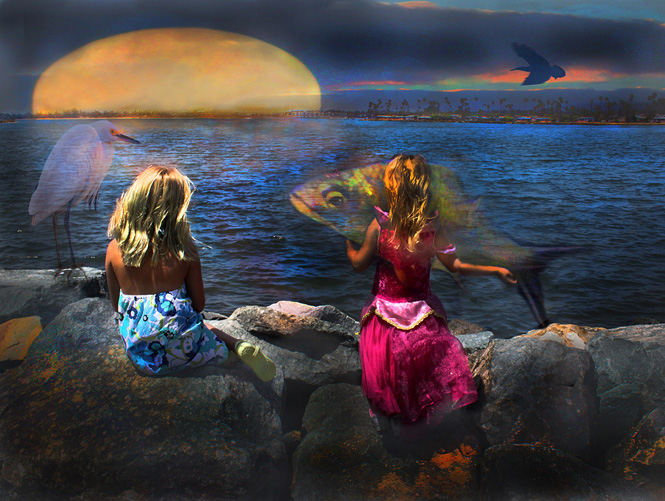
What brought you to combine art and social justice in your work?
I think I always have been a person who believes in social justice; maybe because my parents were active in the Democratic Party, my mother was a social worker and my father an English professor. I grew up in a small town in Georgia, and saw prejudice in my daily life with neighborhood and school segregation. I used to get in trouble because I would stop and play with African American kids on my way home from school.
In 1984, I got my undergraduate degree in Photojournalism and produced the first of four nationally traveled collaborations with poet Frances Payne Adler. That exhibition and book was called Home Street Home, and included stories, poems, photographs, and statistics. That work helped legislation pass in Sacramento, hung in the Cannon Congress Building in Washington DC, in the Arizona state capital, and in Los Angeles was part of the Comic Relief HBO broadcast with Whoopi Goldberg and Robin Williams. The goal was to help people who were homeless.
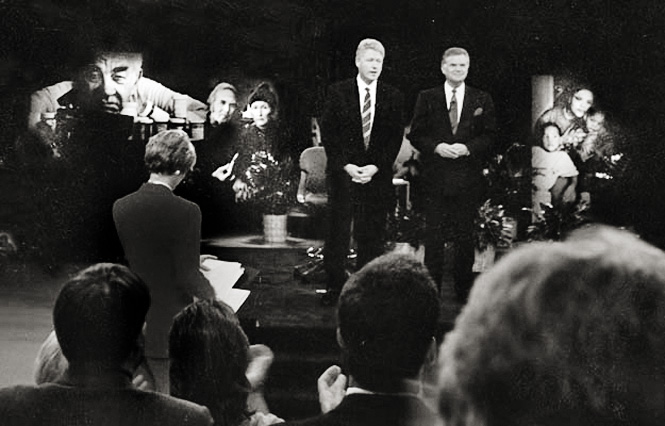
President Clinton in a national CNN Broadcast, Oct. 1993. Ten of Corser’s photographs, from the exhibition “A Matriot’s Dream: Health Care for All,” were enlarged and used on the set with the President, as well as the exhibition showing in the Rotunda of Congress.
What is it about art that helps people absorb such transformative and important messages?
I have seen my art stop legislators long enough to open their hearts and hear the roots of a problem, I have heard stories from people who have felt emotionally moved enough to try change, to help others less fortunate, to keep living despite depression or family illness. Thousands have read and experienced my art as my collaborative exhibitions were shown in 19 states, many state capitals, national conferences, universities, galleries, and museums.
I think the average person and many artists don’t understand the power of art or perhaps HOW to structure a supportive collection of elements that, when combined with art, have the power to change. This is why all of next year I will be working on four small eBooks about Creating Effective Art for Changemakers that will include lesson plans, videos, and templates.

Children participating in a workshop by Kira Corser to promote nonviolent resolutions to gangs, bullying, and domestic violence, as part of First Night Monterey Artworks.
What do you think is the most important skill to be a successful artist or changemaker?
I think persistence, patience, and the belief in the power of collaboration and partnerships are more important than artistic talent. But artistic presentation has a major part in how the audience accepts the message you want to voice.
If the technical skill of the artist makes the work beautiful, then the eye and the heart of the observer work together to create caring. No change takes place without someone who cares enough to listen.
In my exhibitions, I often print large—sometimes 30″ x 40″—on silver gelatin paper that was toned or more recently hand-painted color prints on watercolor paper, matted and framed with the words so each piece tells a story with beauty and pathos. These skills are difficult for many artists because the ego, or ideals, of personalities often are challenging.

You’re working on a couple of big projects right now, Sea Changes and Art Is the Next Peace: Connecting Communities. Tell me about them. What is the expected outcome from each and how can people get involved, if they want to?
Sea Changes is a project that started in San Diego and we are growing statewide and internationally. On New Years Eve this year, we projected Save the Earth and Ocean messages and imagery on the front of the Monterey Conference Center for thousands who attended First Night Monterey. We welcomed visitors to experience the Virtual Undersea Experience, Ocean Creature Shadow Puppets, and much more.
People can contact us, the seven scientists and artists who have been collaborating on this project for the past three years, via our website www.seachanges.org and Facebook page.
The other project is titled Art is the Next Peace: Connecting Communities. I have been working on it for eight years, since my partner was murdered and gangs threatened the lives of kids in Salinas where I was living. This project has a website, www.artconnectingcommunties.org, and Facebook page so people can share what they feel and what they are doing to promote peace and justice.
I will be in Atlanta in January and February of this year, and in Washington DC with that project later in 2015. The work includes One Billion Rising for Justice Atlanta, the Martin Luther King Center, the Carter Center, the International Child Art Festival, and schools in El Cajon with Iraqi refugee children.
To learn more about Kira Corser and her work, please visit her website: http://www.kiracorser.com.
Cheers,


